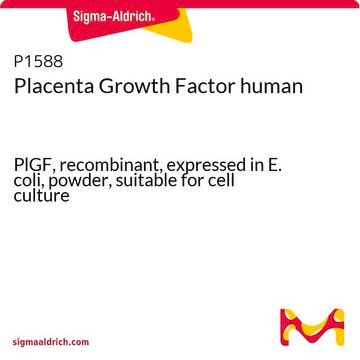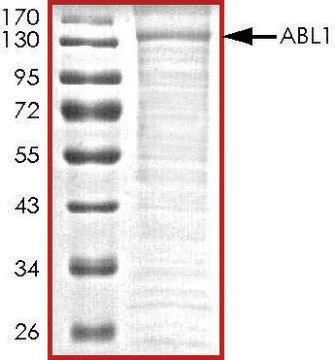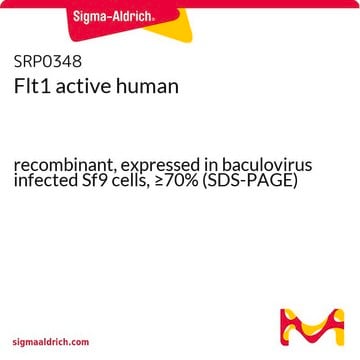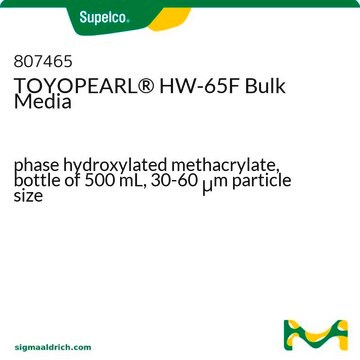PF082
VEGFR1, Human, Recombinant, S. frugiperda
Synonym(e):
Vascular Endothelial Growth Factor Receptor-1, Flt-1, EMRK2
About This Item
Empfohlene Produkte
Assay
≥90% (SDS-PAGE)
Qualitätsniveau
Form
lyophilized
Hersteller/Markenname
Calbiochem®
Lagerbedingungen
OK to freeze
Verunreinigungen
≤1 EU/μg Endotoxin (EU/μg cytokine)
Versandbedingung
wet ice
Lagertemp.
−20°C
Allgemeine Beschreibung
Biochem./physiol. Wirkung
Warnhinweis
Physikalische Form
Rekonstituierung
Sonstige Hinweise
Soker, S., et al. 1998. Cell92, 735.
Kroll, J. and Waltenberger, J. 1997. J. Biol. Chem. 272, 32521.
Kendall, R.L. and Thomas, K.A. 1993. PNAS.90, 10705.
Klagsbrun, M. and Soker, S. 1993. Current Biology 3, 699.
Senger, D., et al. 1993. Cancer and Metastasis Rev.12, 303.
Brown, L., et al. 1992. Kidney International42, 1457.
Conn, G., et al. 1990. PNAS87, 1323.
Shibuya, M., et al. 1990. Oncogene5, 519.
Rechtliche Hinweise
Lagerklassenschlüssel
11 - Combustible Solids
WGK
WGK 1
Flammpunkt (°F)
Not applicable
Flammpunkt (°C)
Not applicable
Analysenzertifikate (COA)
Suchen Sie nach Analysenzertifikate (COA), indem Sie die Lot-/Chargennummer des Produkts eingeben. Lot- und Chargennummern sind auf dem Produktetikett hinter den Wörtern ‘Lot’ oder ‘Batch’ (Lot oder Charge) zu finden.
Besitzen Sie dieses Produkt bereits?
In der Dokumentenbibliothek finden Sie die Dokumentation zu den Produkten, die Sie kürzlich erworben haben.
Unser Team von Wissenschaftlern verfügt über Erfahrung in allen Forschungsbereichen einschließlich Life Science, Materialwissenschaften, chemischer Synthese, Chromatographie, Analytik und vielen mehr..
Setzen Sie sich mit dem technischen Dienst in Verbindung.







